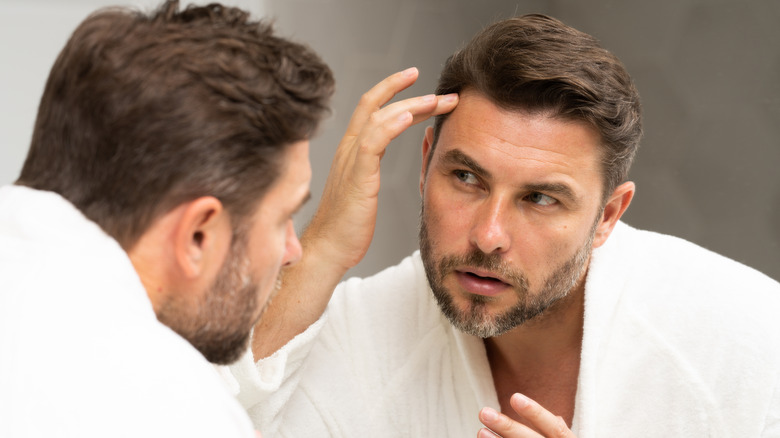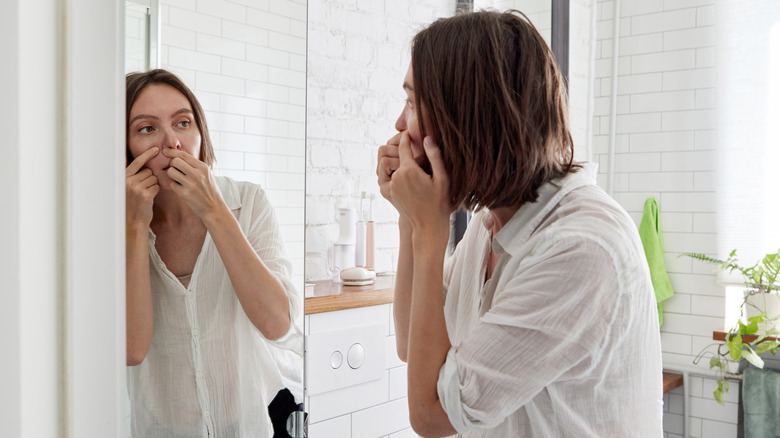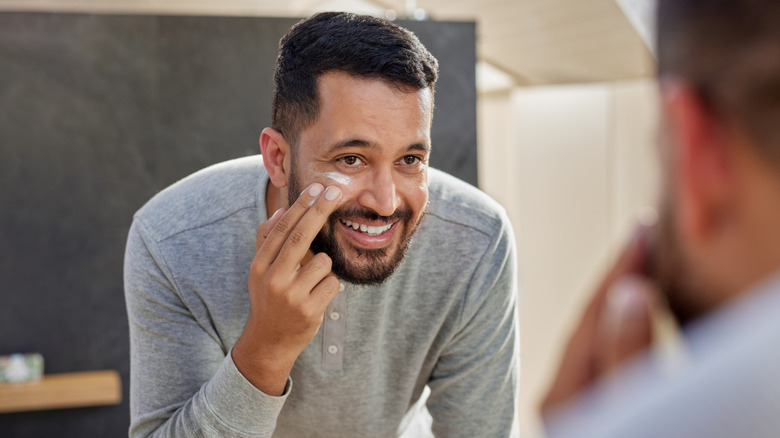People take testosterone for many different reasons. Older men might undergo testosterone replacement therapy because testosterone levels tend to drop with age. Whether younger men need it or not, they might take testosterone to give a boost to their sex drive. Bodybuilders might be drawn to anabolic steroids to help them build muscle. Some might use certain forms of testosterone to treat metastatic breast cancer. Testosterone can also be used for those undergoing gender-affirming treatments.
(Find out the real effects testosterone has on your body)
Whether your testosterone is in the form of an injection, pill, or gel, one of the most common side effects is acne. It might make sense that testosterone gel could cause skin irritations, but acne? Dr. Jason Singh, Chief Medical Officer and Physician at One Oak Medical, explained to Health Digest why testosterone could cause breakouts, even if you’re well beyond your teenage years.
“Taking testosterone tends to increase sebum production which creates an environment that promotes acne,” Singh said. “It does so by providing nutrients to skin bacteria and clogging pores with dead skin which is favorable for bacterial growth.”
How hormones are linked to breakouts
Acne is pretty common during the adolescent and teenage years as hormonal changes occur. Yet breakouts can also occur during adulthood due to your hormones. Women might notice a zit or two a few days before their period, and similar breakouts can add to the stress of perimenopause.
One key factor in acne is androgens. Everyone has androgens (like testosterone) in their body. Your skin converts testosterone into dihydrotestosterone (DHT), a hormone that charges your sebaceous glands to produce more sebum (oil). Certain areas, like the face and upper body, may produce significantly more DHT — up to 20 times more than other skin areas. This increased production could make these regions more prone to breakouts, per an older study in the Journal of Investigative Dermatology.
Other hormones also play a role in whether you get breakouts, according to a 2021 review in Cells. Estrogen can counterbalance the effect of androgens on sebum production. That’s why women taking birth control pills might see their skin improve. Additionally, insulin-like growth factor 1 (IGF-1) kicks androgens into gear when you reach puberty, increasing sebum production. High-glycemic diets can also raise IGF-1 hormone levels. Stress hormones such as cortisol further factor into acne by stimulating the production of sebum.
Some people who have acne might be genetically more sensitive to these subtle shifts in hormones. This can lead to more frequent or severe breakouts.
Treating testosterone-related acne
If your skin breaks out due to your testosterone therapy, Singh says consistent skincare is key. He recommends washing your face twice a day with a gentle cleanser to combat the excess oil on your skin. “Use non-comedogenic moisturizers and skin care products, and consider topical retinoids like adapalene which normalize skin cell turnover,” he said. “Also it’s important to maintain proper hydration for better skin barrier.”
Testosterone-induced acne might not appear just on your face. You might also see breakouts on your torso. Trifarotene is a topical retinoid that’s been approved to treat acne on your face and torso. Another option for acne is a topical antiandrogen called Winlevi (clascoterone). This prevents the hormones from making too much sebum.
“For more severe cases I have used oral antibiotics, especially if the acne is causing severe inflammation,” Singh said. Antibiotics can be an effective treatment if your acne affects many areas of your body. However, antibiotics shouldn’t be used as a long-term option because the bacteria that causes acne could become resistant to the antibiotics.


